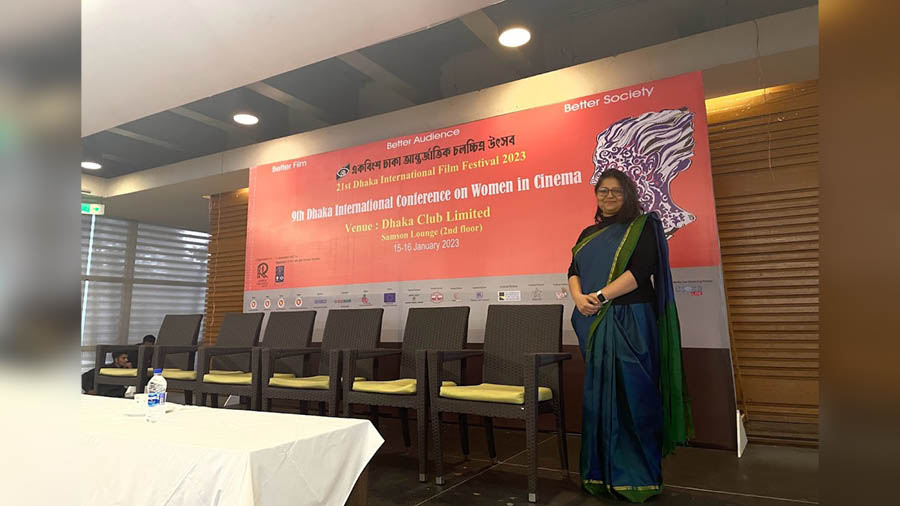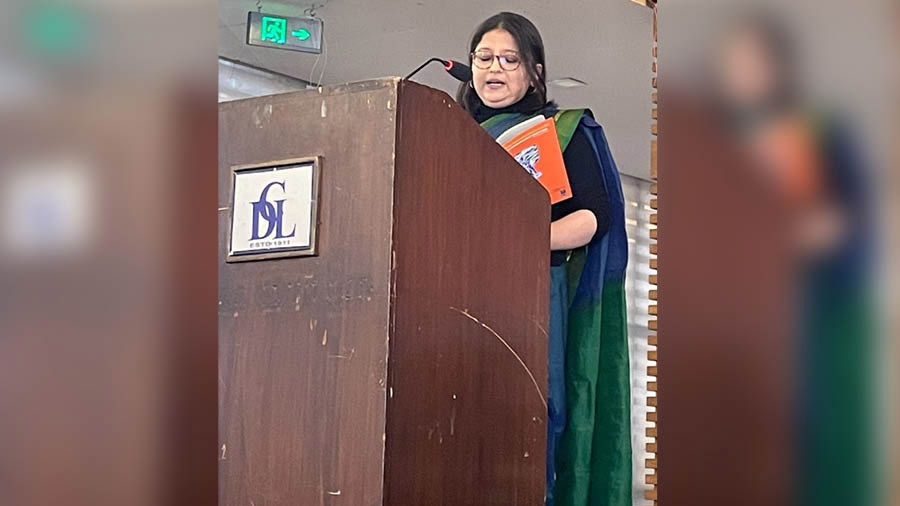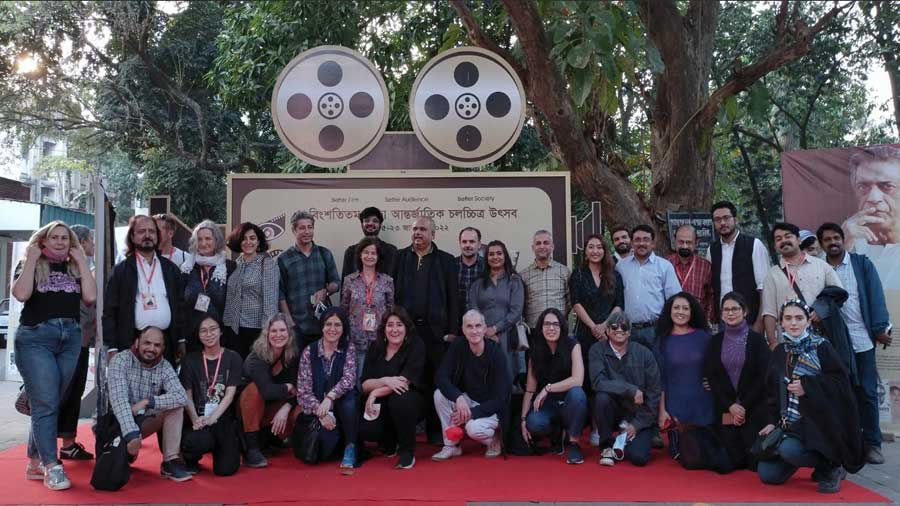The 21st Dhaka International Film Festival (DIFF), held between January 14 and 22, was a remarkable event. It was the largest international film festival in Dhaka, Bangladesh, and was held at multiple locations across the city, including Alliance Francaise de Dhaka, Bangladesh National Museum, National Art Gallery, and the Bangladesh Shilpakala Academy. The festival attracted foreign delegates and filmmakers and screened 252 films from 71 countries. The festival’s motto, “Better Film, Better Audience and Better Society”, reflected its commitment to promoting high-quality cinema that enriches and inspires audiences and fosters a more equitable and inclusive society.
The festival was inaugurated by distinguished personalities from various ministries of Bangladesh, including the ministries of finance, information, foreign affairs, home affairs and culture. This demonstrated the government’s support for the festival and cinema’s vital role in promoting cultural exchange, creativity and social progress. One of the festival’s most exciting features was the wide range of categories in which films were screened. These included the Asian Competition Section, Retrospective Section, Bangladesh Panorama, Wide Angle, Cinema of the World, Children’s Films, Spiritual Films, Short and Independent Films, and Women’s Films. Each category showcased a diverse array of films that catered to a wide range of tastes and interests.
Addressing the gender gap in cinema across the world

The inauguration ceremony at DIFF 2023, which hosted filmmakers, academicians and cinephiles from across the world
The festival’s two allied events, the Script Lab and the Women in Cinema Conference, were particularly noteworthy. The Script Lab was designed to provide emerging filmmakers with the requisite tools, resources, and support to develop their skills and bring their projects to fruition. The Lab offered workshops, masterclasses and one-on-one sessions with experienced mentors and experts in the field who provided feedback and guidance on the participants’ projects. It also allowed participants to network with other filmmakers, producers and industry professionals, enabling them to build valuable relationships and connections.
The Women in Cinema Conference addressed a pressing issue in the film industry — the prevailing gender gap. The conference provided a platform for women filmmakers to share their experiences and insights and discuss ways to promote gender equity in the industry. The conference’s discussions focused on women’s challenges and opportunities in the film industry, including funding, distribution and representation issues. The conference also highlighted the importance of increasing the visibility of women filmmakers and promoting their work to a broader audience.
As a keynote speaker at the 21st Women in Cinema Conference and a discussant at the 20th Women in Cinema Conference, I was deeply impressed by the festival’s commitment to promoting diversity, inclusivity and social change through cinema. The festival’s dedication to showcasing films from a wide range of countries and cultures, as well as its focus on promoting gender equity and supporting emerging filmmakers, make it an important event on the global film calendar. In addition, the festival fosters cultural exchange and understanding by bringing together filmmakers, industry professionals and audiences from across the globe to build a more creative and equitable world.
Critically evaluating the position of women in cinema

The author was a part of the Women in Cinema Conference, which investigated the position and role of women on and behind the screen
In the history of Indian cinema, the number of women filmmakers has been minuscule. As a result, film historians and scholars alike have tended to treat women filmmakers as the “other”. Although some writing and research has focused on the ways and the manners in which women filmmakers have diverged from the work of male directors (often recognised as more mainstream), such reflections have been scanty, indicating that the masculine is valued and the feminine is ignored. The Women in Cinema Conference attempted to evaluate this critical position of women in cinema, focusing on the exclusivist discourse of women filmmakers and reflecting on the filmic representations.
The 21st Women in Cinema Conference in 2023 was associated with the Department of Women and Gender Studies, Dhaka University. The conference scheduled on January 16 and 17 at the prestigious Dhaka Club provided a platform for addressing women's issues through the work of several distinguished panellists. The speakers presented six keynote papers, including From Dhaka to Hollywood? Tuki the Tiger Takes a Trip: An Unusual Project by Sydney Levine, Human Security and Film: Rediscovering the Potential of Storytelling for Social Impact and Global Peace by Dalia Alic, The Eye Behind the Cinema: Reflection on the Women Workforce of Contemporary Bengali Cinema in India by myself, Hazar Churashiki Ma (1997) to Kalbela (2011): Political Construction of Love Affection and Intimacy in Naxalite Movement: A Feminist Contemplation” by Dr Debjani Halder, Hawa — Mythology, Mystery and Magic Realism in Bangladeshi Cinema by Mehzad Ghalib and Who Are We?... How Do We Move Forward by Hannah Fisher, an international film and TV consultant and former director of the Vancouver International Film Festival.
These papers cover a wide range of topics related to the film industry, from the political construction of love and intimacy in Indian cinema to the potential of storytelling for social impact and global peace. They also explore the role of women in contemporary Bengali cinema in India, the use of mythology and magic realism in Bangladeshi cinema, and the challenges and opportunities the film industry faces today. Overall, they offer crucial insights into the complex and multifaceted nature of the film industry and its impact on society.
Examining the representation of women’s voices in Bengali cinema

The author presenting her paper on the women workforce in contemporary Bengali cinema at DIFF 2023
My paper at the 21st Women in Cinema Conference, The Eye Behind the Cinema: Reflection on Woman Workforce of Contemporary Bengali Cinema in India, attempts to evaluate the critical position of women in Bengali cinema, focusing on the exclusivist discourse of women filmmakers and reflecting on the filmic representations. It examines the representation of women's voices in films by female filmmakers, particularly in Bengali cinema. The analysis highlights women filmmakers’ limitations regarding the genres they can explore and the narrative structures they can adopt. The paper argues that female filmmakers consciously move away from narratives that objectify women for male pleasure. However, the male-dominated film industry often restricts women to specific roles, and their narratives are often influenced by their male counterparts.
The paper also notes the need for more opportunities for women in technical roles such as cinematographer and director. At the previous Women in Cinema Conference in 2022, I thoroughly enjoyed the role of discussant for the paper by Yana Lekarska, a Bulgarian filmmaker, called Characters depicted by female directors – a matter of choice or responsibility? Her paper evaluates the centrism of gender in narrativisation regarding women filmmakers. Interestingly, Yana explores female directors’ dilemmas when creating films that can reach a wider audience. On the one hand, if a female director wants to deliver universal messages, she may have to choose male protagonists to appeal to both male and female audiences. However, on the other hand, if a female director wants to tell a woman’s story from a woman’s perspective, she may have a more limited audience.
As a film academician and scholar, I am invited as a speaker or as a discussant to several conferences. However, this one was different, not just in its scale but also in its essence. I was thrilled not just by the discussions on stage but also what occurred off it. The tea and lunch breaks led to interaction and thriving discussions on the participation of women in cinema or the lack thereof. Witnessing the venue packed with women activists, film critics, scholars and filmmakers from numerous countries was an enriching experience. Of course, the conversations were diverse, straddling everything from European to Turkish cinema. However, the backdrop was unanimously that of women’s participation/representation.
The realisation that dawned on me during the conference was that borders do not define concerns of gender inequality. Women filmmakers and scholars worldwide can and did question patriarchy at a conference. For instance, at the 21st Women in Cinema Conference, the Bangladeshi film Hawa sparked debate over whether its objectification of women was necessary for the script. The memories I cherish most from this conference and the festival, in general, involved meeting and making friends with powerhouses such as Elaheh Nobakht (festival programmer, distributor and producer of Iranian cinema), Meral Melika Duran (political sociologist, cinema producer, critic, consultant) and filmmakers like Rajni Basumatary and Supriya Suri from India, Negin Ahmadi from Iran, Mika Sasaki from Japan and renowned Bangladeshi filmmaker Samia Zaman and film academician Debjani Haldar.
To conclude, I must add how DIFF stood out in large part because of the unstinting work of its student volunteers. Their sheer desire to learn and their love for cinema was unmatched. Being in academia, student participation is what I most look forward to at a film festival, and DIFF’s volunteers left me spellbound. I would like to sincerely thank festival director, Ahmed Muztaba Zamal, for inviting me, giving me the chance to partake in meaningful conversations and leave with such beautiful memories and new friends to cherish for years. I was also deeply touched by the sheer compassion shared by the Bangladeshi people, which made the other side of Bengal feel a lot like home.
Dr Ipsita Barat is the head of mass communication & videography, and assistant professor at St. Xavier’s College (Autonomous), Kolkata.

